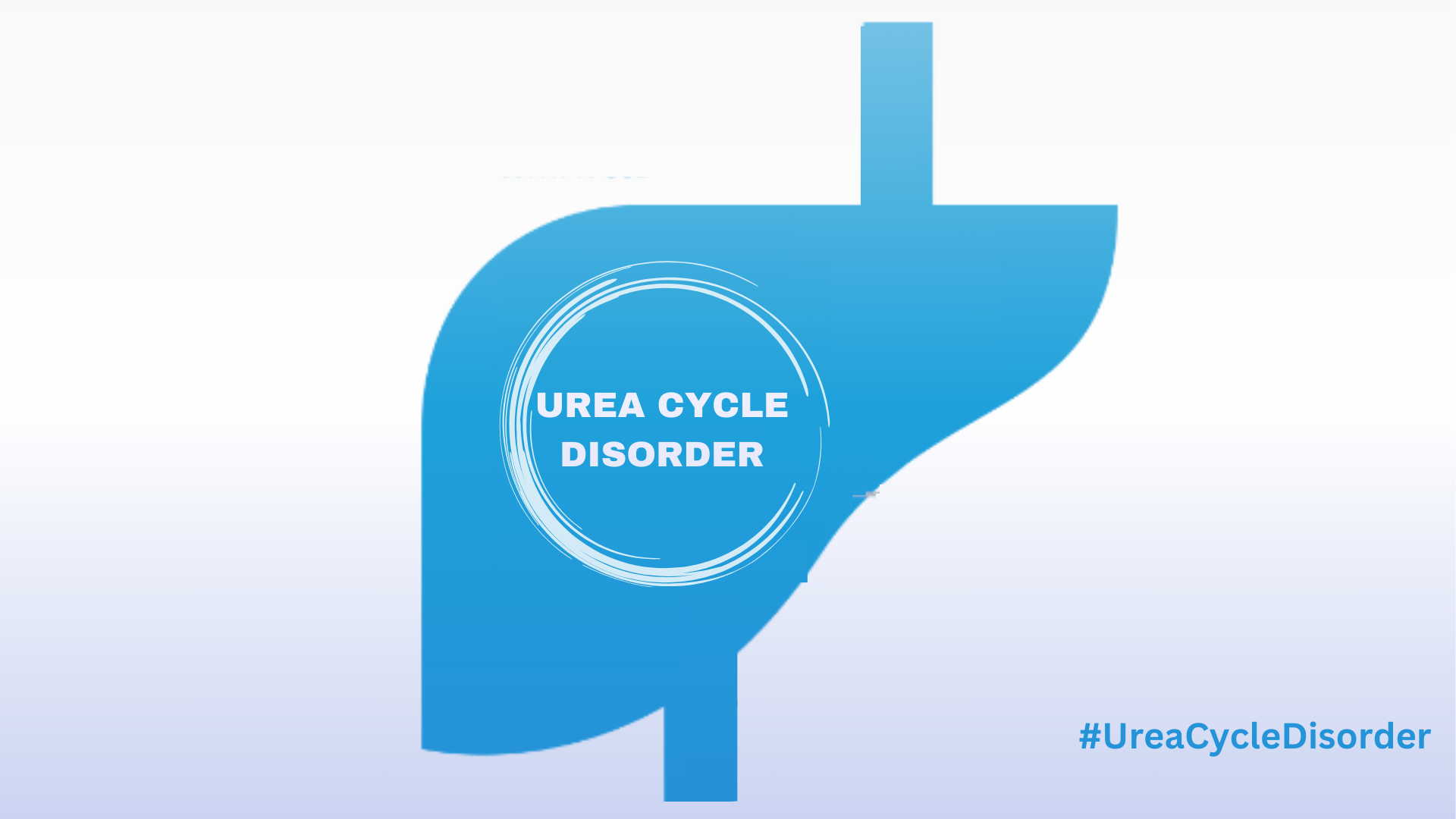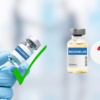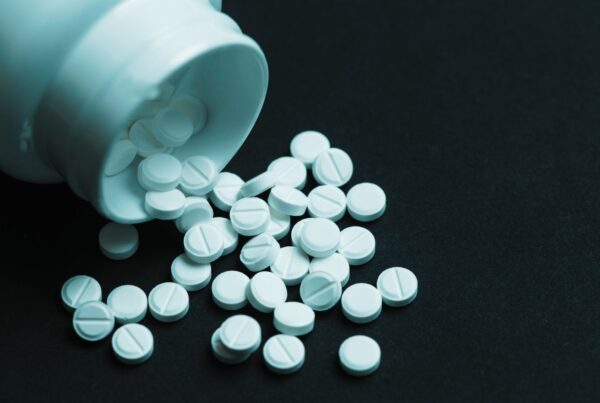Introduction
Welcome to our exploration of the intricate pathways within the human body, where even the smallest biochemical processes wield significant influence. Today, we embark on a journey into the realm of urea cycle disorders (UCDs), a group of rare yet potentially life-altering conditions that disrupt the body’s waste elimination process.
Understanding Urea Cycle
The urea cycle, also known as the ornithine cycle, is a vital series of chemical reactions primarily occurring in the liver and certain other tissues. Its primary function is to eliminate toxic ammonia from the bloodstream by converting it into urea, a less harmful compound that is then excreted in urine. This cycle relies on several enzymes and transporters working in tandem to facilitate the conversion of ammonia into urea, thus maintaining the body’s proper nitrogen balance and preventing the accumulation of harmful ammonia levels.
Enzymes, specialized proteins facilitating chemical reactions, play a crucial role in converting ammonia into urea for elimination. Urea, containing amino acids such as arginine, ornithine, and citrulline alongside ammonia, is transported through the bloodstream and kidneys. Ultimately, the urea cycle culminates in the excretion of urea from the body through urine.
What Is Urea Cycle Disorder?
Urea cycle disorders (UCDs) are uncommon genetic metabolic conditions stemming from deficiencies in enzymes or transporter molecules crucial for the urea cycle pathway. Primarily impacting the liver’s capacity to eliminate ammonia from the body, these disorders can result in an accumulation of toxic ammonia in the bloodstream, posing significant health risks if left unmanaged. Typically identified in infants, UCDs may present symptoms like reduced appetite, fatigue, seizures, and respiratory irregularities.
The urea cycle serves as a pivotal metabolic process responsible for converting ammonia into urea, which is subsequently expelled through urine. However, in individuals with UCDs, this cycle faces disruption due to enzyme deficiencies, leading to hyperammonemia and potential neurological complications if not promptly addressed. UCDs are categorized based on the specific enzyme or transporter affected within the urea cycle pathway.
In individuals with UCDs, impaired ammonia detoxification can occur, potentially leading to neurological complications if left untreated. Therefore, effective management of UCDs is essential to ensure proper ammonia metabolism and prevent associated health risks.
Variability in Urea Cycle Disorder Prevalence and Severity
Urea Cycle Disorders (UCDs) vary in prevalence across different regions and populations. In the EU5 countries, it’s estimated that there were around 1,027 to 1,033 cases of UCDs among individuals aged 0–17 in 2015 and 2024, with a prevalence of 1.71 per 100,000 population in that age group.
A study published in the Indian Journal of Medical Genetics and Genomic Medicine found that Urea Cycle Disorders (UCDs) have a prevalence of 1 in 50,000 to 1 in 100,000 births in India.
In the United States, UCDs occur in approximately 1 patient per 35,000 births, with an average of 113 new UCD patients diagnosed per year.
The overall prevalence of UCDs is estimated to be around 1 in 8,500 births, though this figure may be underestimated due to undiagnosed cases or infants who die without a definitive diagnosis.
The severity of UCDs can range from mild to severe, with symptoms impacting cognitive development and potentially leading to life-threatening complications such as irreversible brain damage, coma, or death in severe cases of hyperammonemia.
Inheritance Pattern
Urea Cycle Disorders (UCDs) typically follow an autosomal recessive inheritance pattern, meaning an individual must inherit two copies of the faulty gene (one from each parent) to develop the disorder. This inheritance pattern is common among various genetic conditions, including UCDs. In certain instances, X-linked recessive inheritance may also contribute to specific UCDs. Grasping the genetic foundation and inheritance patterns of UCDs is essential for diagnosis, genetic counseling, and the effective management of affected individuals.
Symptoms and signs
Signs and symptoms of Urea Cycle Disorders (UCDs) present a spectrum of indicators, each reflecting the underlying metabolic imbalance characteristic of these conditions. These include:
- Aversion to protein-rich foods: Individuals with UCDs may demonstrate a decreased appetite for protein-rich foods due to elevated ammonia levels in the bloodstream.
- Gastrointestinal distress: Excessive ammonia in the blood can lead to gastrointestinal symptoms such as vomiting and nausea.
- Cognitive impairment: Elevated ammonia levels may impact cognitive function, resulting in confusion or hyperactivity.
- Impaired concentration: Ammonia accumulation can disrupt cognitive abilities, leading to difficulties in maintaining focus and attention.
- Fatigue: The body’s inability to effectively eliminate ammonia can lead to persistent fatigue and tiredness.
- Headaches: Elevated ammonia levels may precipitate headaches, potentially serving as a symptom of UCDs.
- Excessive tiredness and difficulty waking up: Individuals with UCDs may experience prolonged fatigue and find it challenging to awaken due to the neurological effects of ammonia on the brain.
Early diagnosis and treatment are crucial in managing UCD symptoms and improving the quality of life for affected individuals. Understanding the genetic and metabolic disruptions underlying UCDs is fundamental for providing comprehensive care and support to those impacted by these disorders.
Early signs of urea cycle disorders typically emerge shortly after birth but may manifest at any age, including
- Lethargy or fatigue.
- Irritability or fussiness in infants.
- Nausea or vomiting.
- Inability to feed properly.
- Abnormal breathing patterns.
- Confusion.
These symptoms, stemming from hyperammonemia, can range from mild to severe, encompassing cognitive, behavioral, and developmental challenges, underscoring the critical importance of prompt recognition and management to prevent life-threatening complications and ensure optimal outcomes for affected individuals.
Types
Urea cycle disorders are categorized based on the particular enzyme deficiency, each contributing to the disruption of ammonia metabolism and subsequent hyperammonemia. Here are some common types of UCDs:
- Ornithine Transcarbamylase (OTC) Deficiency:
OTC deficiency, the most prevalent type of UCD, arises from a deficiency in the enzyme ornithine transcarbamylase. This enzyme is pivotal for converting ornithine and carbamoyl phosphate into citrulline within the urea cycle.
- Carbamoyl Phosphate Synthetase 1 (CPS1) Deficiency:
CPS1 deficiency results from inadequate levels of the enzyme carbamoyl phosphate synthetase 1. This enzyme initiates the urea cycle by converting ammonia and bicarbonate into carbamoyl phosphate.
- Argininosuccinate Synthetase (ASS) Deficiency:
ASS deficiency stems from insufficient activity of the enzyme argininosuccinate synthetase, essential for the conversion of citrulline and aspartate into argininosuccinate.
- Argininosuccinate Lyase (ASL) Deficiency:
ASL deficiency is characterized by a lack of the enzyme argininosuccinate lyase, vital for the conversion of argininosuccinate into arginine and fumarate within the urea cycle.
- Citrullinemia Type I (ASS1 Deficiency):
Citrullinemia Type I results from a deficiency in the enzyme argininosuccinate synthetase 1 (ASS1), impairing the conversion of citrulline to argininosuccinate.
- N-acetylglutamate synthase (NAGS) deficiency.
- Citrin deficiency or Citrullinemia type II.
- Arginase (ARG) deficiency.
These UCDs manifest unique clinical presentations and complications, emphasizing the importance of early diagnosis and targeted interventions to manage ammonia accumulation effectively and mitigate potential adverse outcomes.
Diagnosing Urea Cycle Disorders (UCDs) involves:
- Clinical assessment of symptoms like anorexia, vomiting, lethargy, seizures, and respiratory issues.
- Evaluation of hyperammonemia, characterized by elevated blood ammonia levels.
- Biochemical profiling through blood and urine tests to measure ammonia, urea, and metabolic markers by amino acid profile analysis
- Genetic analysis to identify specific mutations causing enzyme deficiencies. This genetic elucidation informs accurate diagnosis, prognostication, and individualized therapeutic regimens.
- Genetic testing involves analyzing blood samples to identify specific genetic alterations responsible for UCD symptoms.
- Consideration of family history for insights into inherited risk.
- Imaging studies such as MRI or CT scans if neurological complications are suspected.
- Liver biopsy involves examining tissue specimens from the liver to ascertain enzyme patterns indicative of the disorder.
Early detection and intervention are crucial for managing UCDs and preventing severe neurological complications.
Cost Considerations for UCD Screening Panels in India
The cost of screening for Urea Cycle Disorders (UCDs) can vary based on the tests included in the panel and the healthcare provider or laboratory conducting the screening. In India, UCD screening panels typically range from approximately INR 5,000 to INR 15,000 or more, depending on the complexity and number of tests involved.
Consulting with healthcare providers or diagnostic centers offering UCD screening panels is essential to obtain accurate pricing information and details about the tests included. Screening for UCDs is crucial for early detection, diagnosis, and management of these rare genetic metabolic disorders to prevent severe complications associated with hyperammonemia and metabolic imbalances.
The Urea Cycle Disorder Panel (UCD Panel) is specifically designed to diagnose UCD, a rare genetic condition. The cost of this panel in India varies depending on the provider and the tests included. For instance, a UCD Panel Test is priced at INR 10,000.
This advanced test utilizes state-of-the-art technology and equipment to ensure precise results. Early detection through UCD screening is vital for the effective management and prevention of complications associated with these disorders.
Treatment
Treatment for urea cycle disorders (UCDs) typically involves a combination of dietary management, medications, and in some cases, liver transplantation. Here’s a breakdown:
- Dietary Management: A fundamental aspect of managing UCDs involves following a low-protein, high-calorie diet. This dietary approach helps reduce the intake of protein-rich foods, which can lead to increased ammonia levels in individuals with UCDs. Some individuals may also require special medical formulas that are low in protein but contain essential nutrients.
Optimizing Nutrition for Urea Cycle Disorders (UCDs)
Managing Urea Cycle Disorders (UCDs) involves a specialized diet tailored to minimize ammonia production while providing essential nutrients for growth and energy. A low-protein, high-calorie diet forms the cornerstone of UCD management. Here’s a breakdown:
Protein Restriction:
- Emphasize a low protein intake, avoiding or limiting protein-rich foods like meat, dairy, and legumes. This prevents excessive ammonia production, a hallmark of UCDs.
Caloric Density:
- Prioritize high-calorie foods to ensure sufficient energy intake, crucial for growth and development, especially in children. Incorporate calorie-dense options such as fruits, vegetables, and whole grains.
Foods to Avoid:
- In adhering to a low-protein, high-calorie diet for Urea Cycle Disorders (UCDs), it’s vital to steer clear of protein-rich foods known to heighten ammonia levels. Examples include red meats like beef, pork, and lamb, as well as poultry such as chicken and turkey. Fish like salmon, tuna, and shellfish, along with dairy products like milk, cheese, and yogurt, are also high in protein and should be restricted.
- Similarly, legumes like beans and lentils, nuts, seeds, and soy-based products such as tofu and tempeh should be consumed sparingly due to their protein content. Individuals with UCDs can effectively manage their condition and mitigate risks associated with ammonia elevation by prioritizing low-protein, calorie-dense options and avoiding these protein-rich foods. Collaboration with healthcare providers or dietitians is crucial for tailoring a personalized dietary regimen suited to the individual’s specific needs.
Supplementation:
- Consider arginine supplementation under medical supervision, as it can aid in managing UCDs by supporting urea cycle function. Dosage and monitoring should be overseen by healthcare professionals.
Consultation with healthcare providers and dietitians specializing in UCD management is paramount to crafting a personalized dietary regimen that addresses the unique needs of individuals with UCDs.
- Medications: Treatment for Urea Cycle Disorders (UCDs) involves medications to regulate ammonia levels and prevent metabolic crises. Key medications include sodium phenylbutyrate (Buphenyl) and sodium benzoate, which scavenge ammonia and stabilize metabolic imbalances. Carglumic acid (Carbaglu) supports the urea cycle to prevent hyperammonemia, while Ravicti and Olpruva aid in managing ammonia levels and metabolic function.
Other medications may include supplements to enhance the function of certain enzymes in the urea cycle or to manage symptoms such as seizures. These medications, combined with dietary modifications and supportive therapies, form a comprehensive approach to UCD management, ensuring metabolic stability and improving quality of life.
- Liver Transplantation: Liver transplantation (LT) offers hope for individuals with severe Urea Cycle Disorders (UCDs) unresponsive to standard treatments. It addresses the enzymatic deficiency causing hyperammonemia, but its suitability depends on factors like disease severity, patient age, and donor organ availability. Despite improved outcomes, LT is complex and not without risks, necessitating long-term monitoring for complications and recurrence of hyperammonemia. In essence, LT is a crucial option for severe UCD cases resistant to conventional therapies, but careful assessment and post-operative surveillance are vital.
- Symptoms Management: Individuals with Urea Cycle Disorders (UCDs) may require additional supportive care tailored to their specific symptoms and complications. This could involve addressing neurological symptoms, preventing dehydration, and managing other emerging medical issues.
Treatment for UCDs is personalized, requiring continuous monitoring and adjustments to enhance outcomes and quality of life. Early detection and intervention are pivotal in managing UCDs and mitigating long-term complications.
The market value of Sodium phenylbutyrate (Buphenyl) and Sodium benzoate
In managing Urea Cycle Disorders (UCDs), Sodium Phenylbutyrate (Buphenyl) and Sodium Benzoate play vital roles:
- Sodium Phenylbutyrate (Buphenyl) is used for chronic management to control high blood ammonia levels but not for immediate treatment during acute hyperammonemia.
- Sodium Benzoate, in combination with sodium phenylacetate, is administered intravenously to swiftly reduce ammonia levels during acute hyperammonemia episodes.
These medications are essential components of a comprehensive UCD management strategy, with Buphenyl focusing on long-term control and Sodium Benzoate addressing acute emergencies.
Sodium Phenylbutyrate: The global market for sodium phenylbutyrate is expected to expand significantly, reaching US$ 3.02 billion by 2030 from US$ 1.92 billion in 2023, with a compound annual growth rate (CAGR) of 6.7% during the forecast period. This growth is driven by factors such as the growing prevalence of Urea Cycle Disorders (UCDs) and Maple Syrup Urine Disease (MSUD), coupled with increasing awareness of the therapeutic benefits of sodium phenylbutyrate for these conditions.
Sodium Benzoate: The global market size for Sodium Benzoate reached USD 597.9 million in 2022 and is forecasted to rise to US$ 182,965.2 thousand by 2028, with a projected CAGR of 4.5% during 2021-2028. The market is expected to experience significant growth, valued at USD 597.9 million initially and estimated to achieve a substantial increase with a CAGR of 4.3% during the forecast period, primarily fueled by heightened demand across various sectors, including pharmaceuticals. Initially estimated at USD 1.22 billion in 2021, the global Sodium Benzoate market size is poised for further expansion, with an anticipated compound annual growth rate (CAGR) of 6.1% from 2022 to 2030, reaching USD 2.1 billion by 2030.
Liver Transplant Outcomes: Graft and Patient Survival Rates
Graft survival rates for recipients of deceased donor livers were approximately 75.9% to 79.2% over 5 years. Conversely, for adult living donor liver transplant recipients, graft failure rates stood at 6.1% at 6 months, 8.7% at 1 year, 14.2% at 3 years, and 19.4% at 5 years.
Patient survival post-liver transplantation closely mirrored graft survival rates, with most recipients experiencing rates exceeding 80%. However, certain groups, such as those aged 65 years or older or individuals with acute liver failure or a high MELD score, exhibited lower survival rates.
Food for special medical purposes for UCD
In the nutritional management of Urea Cycle Disorders (UCDs), Food for Special Medical Purpose (FSMP) products, such as Comidamed products, play a crucial role by providing tailored nutrition under medical supervision. Here’s how FSMP products are utilized in the treatment of UCDs:
- Tailored Nutrition: FSMP products like Comidamed are specifically formulated to offer a low-protein diet essential for managing UCDs. These products meet the unique nutritional requirements of UCD patients, ensuring adequate nutrition while maintaining metabolic stability.
- Medical Supervision: FSMP products must be used under medical supervision to ensure effective management of the disorder. Healthcare professionals oversee their usage and monitor their effectiveness in meeting the patient’s nutritional needs.
- Supplementation: FSMP products may contain specific amino acids like arginine, crucial for UCD patients. These supplements help maintain metabolic stability and support growth.
- Energy Provision: FSMP products provide sufficient energy to prevent catabolism, crucial for maintaining metabolic stability in UCD patients.
- Regulation and Compliance: FSMP products adhere to strict regulations set by regulatory bodies like the European Food Safety Authority (EFSA) and the U.S. Food and Drug Administration (FDA). This ensures their safety, quality, and efficacy in managing medical conditions like UCDs.
In summary, FSMP products like Comidamed are integral in the nutritional management of UCDs, providing essential nutrients under medical supervision. They contribute to maintaining metabolic stability, preventing complications, and supporting overall health in affected individuals.
Market Analysis: Urea Cycle Disorder
Market Growth: The UCD treatment market is expected to expand significantly, with a projected CAGR between 3.4% and 3.57% from 2022 to 2027. Factors driving this growth include rising UCD prevalence, an increasing treatment product pipeline, and strategic initiatives like mergers and partnerships.
Market Dynamics: Key factors shaping the UCD treatment market include high therapy costs, advancements like liver transplants and dietary management, and novel diagnostic technologies. Collaborations between pharmaceutical firms and research institutions drive innovation.
Overall, sustained growth is anticipated due to increased research investment, an aging population, early screening emphasis, and growing healthcare demands in developing nations. Challenges like therapy complications and limited specialized care access in some regions persist, but the UCD treatment market remains promising.
Conclusion
In managing Urea Cycle Disorders (UCDs), early detection and screening are crucial for timely intervention. The use of Food for Special Medical Purpose (FSMP) products is integral, providing tailored nutrition under medical supervision. By emphasizing early detection, screening, and the utilization of FSMP products, we can optimize patient outcomes and enhance their overall quality of life.
Written By
Aswini PriyaMedical Content Writer
Reviewed By
Dr. AnchalMedico Expert
Last Updated
13 Mar 2024 | 11:00 AM (IST)










